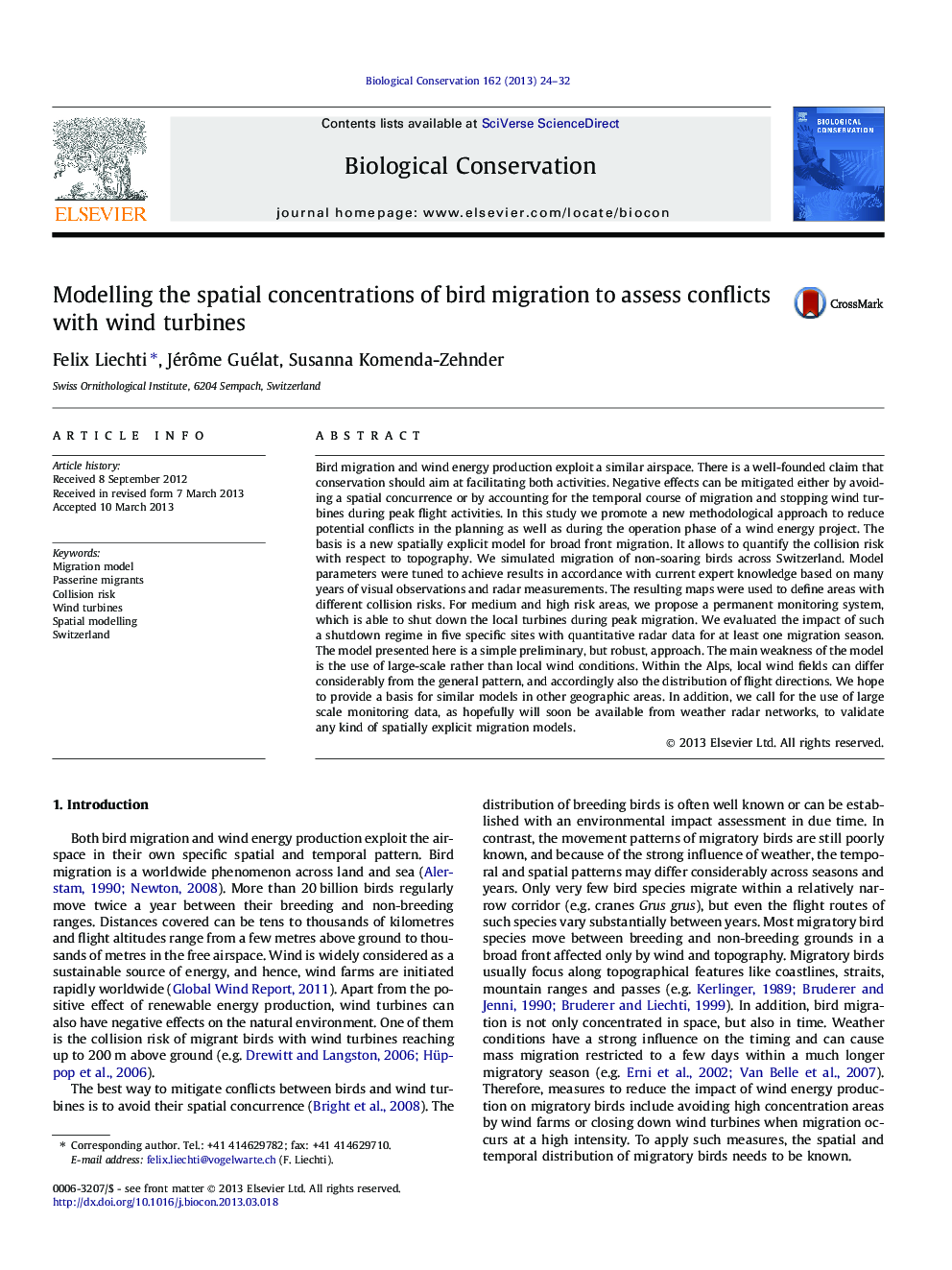| Article ID | Journal | Published Year | Pages | File Type |
|---|---|---|---|---|
| 6300507 | Biological Conservation | 2013 | 9 Pages |
Abstract
Bird migration and wind energy production exploit a similar airspace. There is a well-founded claim that conservation should aim at facilitating both activities. Negative effects can be mitigated either by avoiding a spatial concurrence or by accounting for the temporal course of migration and stopping wind turbines during peak flight activities. In this study we promote a new methodological approach to reduce potential conflicts in the planning as well as during the operation phase of a wind energy project. The basis is a new spatially explicit model for broad front migration. It allows to quantify the collision risk with respect to topography. We simulated migration of non-soaring birds across Switzerland. Model parameters were tuned to achieve results in accordance with current expert knowledge based on many years of visual observations and radar measurements. The resulting maps were used to define areas with different collision risks. For medium and high risk areas, we propose a permanent monitoring system, which is able to shut down the local turbines during peak migration. We evaluated the impact of such a shutdown regime in five specific sites with quantitative radar data for at least one migration season. The model presented here is a simple preliminary, but robust, approach. The main weakness of the model is the use of large-scale rather than local wind conditions. Within the Alps, local wind fields can differ considerably from the general pattern, and accordingly also the distribution of flight directions. We hope to provide a basis for similar models in other geographic areas. In addition, we call for the use of large scale monitoring data, as hopefully will soon be available from weather radar networks, to validate any kind of spatially explicit migration models.
Related Topics
Life Sciences
Agricultural and Biological Sciences
Ecology, Evolution, Behavior and Systematics
Authors
Felix Liechti, Jérôme Guélat, Susanna Komenda-Zehnder,
